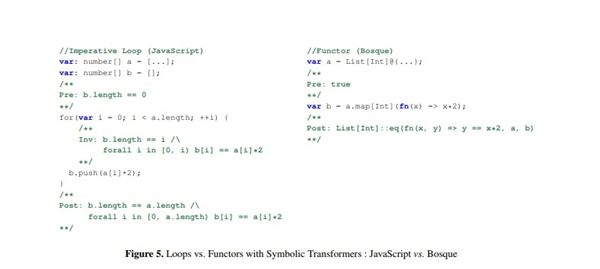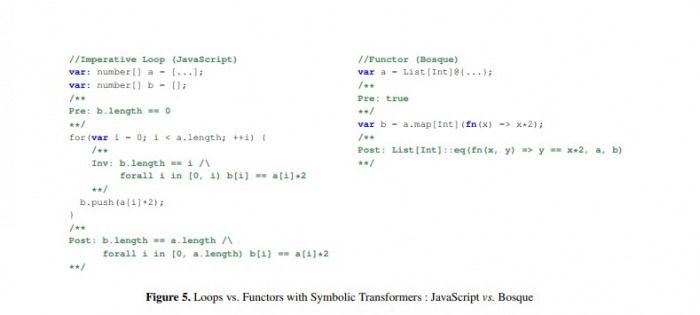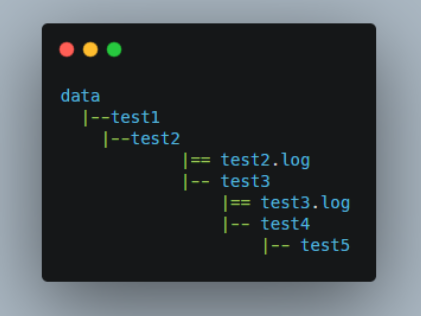分享优化Golang队列实现的技巧与经验
 发布于2024-11-25 阅读(0)
发布于2024-11-25 阅读(0)
扫一扫,手机访问
Golang队列实现的优化技巧与经验分享
在Golang中,队列是一种常用的数据结构,可以实现先进先出(FIFO)的数据管理。虽然Golang已经提供了队列的标准库实现(container/list),但是在某些情况下,我们可能需要根据实际需求对队列进行一些优化。本文将分享一些优化技巧和经验,帮助你更好地使用Golang队列。
一、选择适合场景的队列实现
在Golang中,除了标准库中的container/list队列,还有其他一些第三方库提供的队列实现,比如gods和golang-collections/queue等。不同的队列实现在性能和功能上都有所不同,因此我们应该根据实际场景的需求来选择适合的队列实现。
如果只是简单的入队和出队操作,那么Golang标准库中的container/list就已经足够了。如果需要支持并发操作,可以考虑使用gods或golang-collections/queue等第三方库中的队列实现。
二、使用固定大小的缓冲队列
在某些应用场景下,我们可能需要限制队列的大小,以避免队列无限增长导致内存占用过大。在Golang中,可以使用带缓冲通道来实现固定大小的队列。
type FixedQueue struct {
queue chan int
size int
}
func NewFixedQueue(size int) *FixedQueue {
return &FixedQueue{
queue: make(chan int, size),
size: size,
}
}
func (q *FixedQueue) Enqueue(item int) {
// 如果队列已满,先出队再入队
if len(q.queue) == q.size {
<-q.queue
}
q.queue <- item
}
func (q *FixedQueue) Dequeue() int {
return <-q.queue
}通过固定大小的缓冲队列,我们可以限制队列的大小,保证队列不会无限增长,从而减少内存的占用。但需要注意的是,在使用带缓冲通道实现固定大小的队列时,可能存在阻塞的情况,需要根据具体场景来考虑是否需要处理阻塞的情况。
三、批量处理队列元素
有时候,我们需要对队列中的元素进行批量处理,以提高处理效率。在Golang中,可以使用循环读取队列的方式,将队列中的元素一次性取出,并进行批量处理。
func ProcessQueue(q *list.List) {
// 批量处理的大小
batchSize := 100
for q.Len() > 0 {
// 创建一个切片用于保存批量处理的元素
batch := make([]int, 0, batchSize)
for i := 0; i < batchSize && q.Len() > 0; i++ {
item := q.Front()
q.Remove(item)
batch = append(batch, item.Value.(int))
}
// 批量处理逻辑
for _, elem := range batch {
// TODO: 批量处理逻辑
}
}
}通过批量处理队列中的元素,可以减少频繁的入队和出队操作,提高处理效率。同时,需要根据实际需求来选择适当的批量处理大小,以获得更好的性能。
四、使用无锁队列
在并发场景下,使用无锁队列可以避免锁带来的性能开销和竞争。Golang的sync/atomic包提供了一些原子操作函数,可以用于实现无锁队列。
type LockFreeQueue struct {
head unsafe.Pointer
tail unsafe.Pointer
}
type node struct {
value int
next unsafe.Pointer
}
func NewLockFreeQueue() *LockFreeQueue {
n := unsafe.Pointer(&node{})
return &LockFreeQueue{
head: n,
tail: n,
}
}
func (q *LockFreeQueue) Enqueue(item int) {
n := &node{
value: item,
next: unsafe.Pointer(&node{}),
}
for {
tail := atomic.LoadPointer(&q.tail)
next := (*node)(tail).next
if tail != atomic.LoadPointer(&q.tail) {
continue
}
if next == unsafe.Pointer(&node{}) {
if atomic.CompareAndSwapPointer(&(*node)(tail).next, next, unsafe.Pointer(n)) {
break
}
} else {
atomic.CompareAndSwapPointer(&q.tail, tail, next)
}
}
atomic.CompareAndSwapPointer(&q.tail, tail, unsafe.Pointer(n))
}
func (q *LockFreeQueue) Dequeue() int {
for {
head := atomic.LoadPointer(&q.head)
tail := atomic.LoadPointer(&q.tail)
next := (*node)(head).next
if head != atomic.LoadPointer(&q.head) {
continue
}
if head == tail {
return -1 // 队列为空
}
if next == unsafe.Pointer(&node{}) {
continue
}
value := (*node)(next).value
if atomic.CompareAndSwapPointer(&q.head, head, next) {
return value
}
}
}使用无锁队列可以避免锁带来的性能开销和竞争,提高并发处理的性能。但需要注意的是,使用无锁队列可能会引入ABA问题,需要根据具体场景来考虑是否需要处理ABA问题。
总结
通过选择适合场景的队列实现、使用固定大小的缓冲队列、批量处理队列元素和使用无锁队列等优化技巧,我们可以提高Golang队列的性能和效率,更好地应对各种实际需求。当然,在实际使用中,我们还需要根据具体业务场景和性能需求来选择合适的优化方案。希望本文能对你在Golang队列的使用中提供一些帮助和启发。
产品推荐
-

售后无忧
立即购买>- DAEMON Tools Lite 10【序列号终身授权 + 中文版 + Win】
-
¥150.00
office旗舰店
-

售后无忧
立即购买>- DAEMON Tools Ultra 5【序列号终身授权 + 中文版 + Win】
-
¥198.00
office旗舰店
-

售后无忧
立即购买>- DAEMON Tools Pro 8【序列号终身授权 + 中文版 + Win】
-
¥189.00
office旗舰店
-

售后无忧
立即购买>- CorelDRAW X8 简体中文【标准版 + Win】
-
¥1788.00
office旗舰店
-
正版软件
- 调整PyCharm中文界面设置以满足个人需求的指南
- 让PyCharm适应你的需求:如何调整中文界面设置,需要具体代码示例随着Python的广泛应用和发展,PyCharm成为了许多Python开发者的首选集成开发环境(IDE)。PyCharm提供了丰富的功能和工具,使得开发工作更加高效和愉悦。对于中国开发者来说,一个中文界面将更加方便日常使用。本文将介绍如何调整PyCharm的界面设置为中文,并提供一些具体的代
- 7分钟前 Pycharm 设置调整 中文界面 0
-
正版软件
- 使用PHP API接口:实现数据备份和恢复的方法有哪些?
- 随着互联网的快速发展,越来越多的网站和应用程序需要处理大量的数据,而数据备份和恢复功能也越来越受到重视。作为一种广泛应用的后端编程语言,PHP提供了一些API接口,使得开发者可以轻松地实现数据备份和恢复功能。本文将介绍如何使用PHPAPI接口来实现数据备份和恢复功能。一、数据备份1.将数据保存为SQL文件PHP提供了一个非常简单的方法来将数据库中的数据保存
- 12分钟前 API PHP 备恢复 0
-
正版软件
- 快速开发Web应用:利用SpringBoot和SpringMVC
- 标题:使用SpringBoot和SpringMVC快速开发Web应用SpringBoot和SpringMVC是现代化的JavaWeb开发框架,它们结合了简洁、高效和灵活的特点,可以帮助开发者快速构建可靠的Web应用程序。本文将介绍如何使用SpringBoot和SpringMVC来开发一个简单的Web应用程序,并提供具体的代码示例。环境设置在开始
- 22分钟前 Web应用 0
-
正版软件
- Go语言中的栈和堆跟踪
- 前言Go语言作为一门新兴的编程语言,其具有高并发、高性能的特性,在云计算、大数据分析等领域逐渐得到了广泛的应用。而编写高质量的Go程序,则需要掌握其底层实现原理及其调试技巧。其中,调用栈和堆栈跟踪是Go语言调试过程中不可或缺的内容。本文将介绍Go语言中的调用栈和堆栈跟踪相关知识,并给出示例进行演示。一、调用栈调用栈(CallStack)是计算机操作系统中的
- 37分钟前 Go语言 调用栈 堆栈跟踪 0
-
正版软件
- PHP API开发中的优秀异常处理和重试实践
- 在PHPAPI开发中,异常处理和重试是非常重要的主题。在用户访问API时,任何一次错误都会对使用者造成不好的体验,因此,处理这些异常很重要。同时,由于网络环境的不稳定,许多API开发者通过重试机制来提高请求的完成率。本文将讨论PHPAPI开发的最佳异常处理和重试实践。一、异常处理异常的定义在PHP中,异常被定义为实现了Throwab
- 52分钟前 API PHP 异常处理 0
最新发布
-
 1
1
-
 2
2
-
3
- Vue组件中如何处理图片预览和缩放问题
- 404天前
-
 4
4
- Python实战教程:批量转换多种音乐格式
- 575天前
-
5
- WebSocket协议的优势与劣势分析
- 405天前
-
 6
6
-
7
- java动态代理实例代码分析
- 575天前
-
 8
8
-
 9
9
- java io文件操作删除文件或文件夹的方法
- 572天前
相关推荐
热门关注
-

- Xshell 6 简体中文
- ¥899.00-¥1149.00
-

- DaVinci Resolve Studio 16 简体中文
- ¥2550.00-¥2550.00
-

- Camtasia 2019 简体中文
- ¥689.00-¥689.00
-

- Luminar 3 简体中文
- ¥288.00-¥288.00
-

- Apowersoft 录屏王 简体中文
- ¥129.00-¥339.00